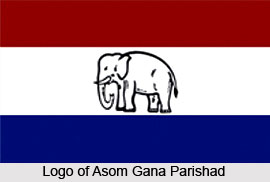 Modern history of Assam encompasses the political appearance of the Eastern Indian state of Assam, which went through a transformation since Indian independence in the year 1947. Separatist groups were created in Assam since 1947, which resulted in demands for sovereignty and political autonomy. Finally, it encouraged the division of Assam. The Government of India divided Assam into various states like Arunachal Pradesh, Manipur, Meghalaya, Mizoram and Nagaland.
Modern history of Assam encompasses the political appearance of the Eastern Indian state of Assam, which went through a transformation since Indian independence in the year 1947. Separatist groups were created in Assam since 1947, which resulted in demands for sovereignty and political autonomy. Finally, it encouraged the division of Assam. The Government of India divided Assam into various states like Arunachal Pradesh, Manipur, Meghalaya, Mizoram and Nagaland.
In the period post 1817, the Government of India under the British Raj invited European entrepreneurs to grow plantations since the regional inhabitants of Assam were rich. Tribal people from the southern portions of Andhra Pradesh, Orissa and Bihar were employed for this task. Assam was separated from Bengal in the year 1874 and became a new province which had its capital in Shillong. However, today, Shillong is Meghalaya`s capital. The province of Assam was joined with East Bengal in 1905, following the rules laid down by some important British Viceroys of British India like Lord Curzon during the Swadeshi Movement. However, in 1911, Bengal`s partition was nullified and it was declared that Assam would be a separate province. Inhabitants of Nepal worked in the plantations of Assam. Merchants as well as small scale industrialists migrated to Assam and contributed to the growing economy of this Indian state.
Since the middle of the 20th century, the inhabitants of present-day Bangladesh have been shifting to Assam. The Government of Assam passed a legislation which made the use of Assamese language mandatory in the year 1961. However, this legislation was later withdrawn when the Bengali speaking community residing in Cachar rebelled against this law.
After the era of the 1970`s, armed separatist groups like National Democratic Front of Bodoland or NDFB and United Liberation Front of Assam, ULFA started to gain prominence. In November 1990, the Government of India stationed the Indian army in Assam, following which military conflicts and assassinations have been bombarding Assam for over a decade. Today, Assam is witnessing the emergence of some militant groups who are based on ethnicity. The Bodo Kachari community belonging to the Bodoland Territorial Council Areas (BTC), people of Dima Hasao District and the Karbis in Karbi Anglong have been granted regional autonomy.
During the Pakistan Civil War which took place in 1971, about two million Bengali Muslim refugees moved to Assam. During the latter portion of the 1970s and the earlier part of 1980s, there were constant political conflicts which occurred between the Assamese students and government of India. The argument was over whether the illegal immigrants of Assam would be granted the rights of citizenship. The Central Government of India and the State Government utilized force, in retaliation, to suppress this movement. Historical records claim that this incident was the worst instance of communal violence since the Partition of Bengal. In the year 1985, the Government of India and the Bodo tribes of Assam signed a peace treaty. Thereafter, an election was held wherein the Asom Gana Parisad or AGP was elected. Charges of corruption resulted in the loss of power of this political party, though they were again elected in 1900.
During the 1980`s, the Assam Agitation occurred in the Brahmaputra Valley. An abrupt rise in legalised voters in this region led to this incident. The government was pressurised to identify foreigners and also check foreigners from unlawfully moving from the neighbouring nation of Bangladesh. However, the agitation concluded after a peace accord was established between the Union Government and its leaders.



















